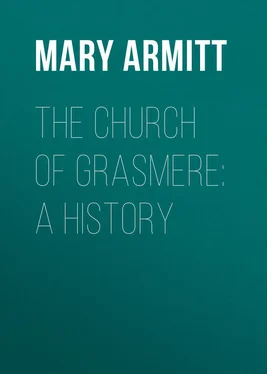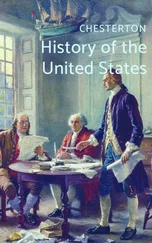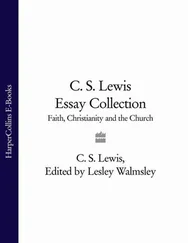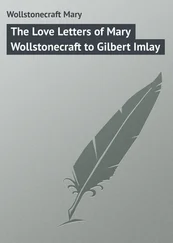Mary Armitt - The Church of Grasmere - A History
Здесь есть возможность читать онлайн «Mary Armitt - The Church of Grasmere - A History» — ознакомительный отрывок электронной книги совершенно бесплатно, а после прочтения отрывка купить полную версию. В некоторых случаях можно слушать аудио, скачать через торрент в формате fb2 и присутствует краткое содержание. ISBN: , Жанр: foreign_antique, foreign_prose, на английском языке. Описание произведения, (предисловие) а так же отзывы посетителей доступны на портале библиотеки ЛибКат.
- Название:The Church of Grasmere: A History
- Автор:
- Жанр:
- Год:неизвестен
- ISBN:http://www.gutenberg.org/ebooks/43002
- Рейтинг книги:4 / 5. Голосов: 1
-
Избранное:Добавить в избранное
- Отзывы:
-
Ваша оценка:
- 80
- 1
- 2
- 3
- 4
- 5
The Church of Grasmere: A History: краткое содержание, описание и аннотация
Предлагаем к чтению аннотацию, описание, краткое содержание или предисловие (зависит от того, что написал сам автор книги «The Church of Grasmere: A History»). Если вы не нашли необходимую информацию о книге — напишите в комментариях, мы постараемся отыскать её.
The Church of Grasmere: A History — читать онлайн ознакомительный отрывок
Ниже представлен текст книги, разбитый по страницам. Система сохранения места последней прочитанной страницы, позволяет с удобством читать онлайн бесплатно книгу «The Church of Grasmere: A History», без необходимости каждый раз заново искать на чём Вы остановились. Поставьте закладку, и сможете в любой момент перейти на страницу, на которой закончили чтение.
Интервал:
Закладка:
Mary L. Armitt
The Church of Grasmere: A History
PART I
PREFACE
INTRODUCTORY
THE DEDICATION OF THE CHURCH
THE SITE
PREFACE
Grasmere draws many pilgrims in these latter days. It has become the Shrine of Nature and Poetry, for within its graveyard lies buried nature's austerest and most sincere interpreter. The natural beauty of the spot, combined with its associations, has given rise to a copious literature; and its praises have been rehearsed in poetry and prose of a high order. But by the historian Grasmere has been neglected. Its geographical position has tended to its eclipse. In ancient times locked up from the world in the farthest chamber of the mountains, and still the remotest parish of Westmorland (itself a neglected county), it has missed the attention of the careful chronicler, and no serious attempt has been made to penetrate its past. James Torre (1649-1699) indeed in his MS. collections for a history of the Archdeaconry of Richmondshire, compiled a list of five rectors who had served the parish of Grasmere before the Reformation; but no searcher has followed up his efforts. Nor has the excellent, though necessarily limited, information given in the pages of Nicolson and Burn (1770) been since filled up or supplemented.
The following historical sketch makes no pretensions to completeness, which would be beyond both the writer's powers and opportunities. It began as a small thing, a chapter merely in the yet unfinished "Chronicles of Rydal." But there seemed a need for the publication of such facts as had been gathered together; and in response to an expressed desire, the sketch that had been laid by was overhauled, expanded and prepared for press. It contains (there is little doubt) some unsuspected errors and oversights, for which the reader's leniency is asked.
The information has been collected from many sources, public, private, and traditional. The earliest comes from the Record Office, where there are treasures still to be explored. For the seventeenth century – and particularly the period of the Civil Wars – the MSS. at Rydal Hall have yielded facts of great interest, especially those culled from the account-sheets of Mr. Richard Harrison, who was agent and executor of Squire John Fleming.
From all sources, however, the information obtained is fragmentary, and facts are disappointingly isolated. Always there is something beyond, that we want to know and cannot find out; and so the story of the great Restoration Tithe Dispute has no ending. The Presentments have been only available for a limited number of years. The church registers are defective. Even the church-wardens' accounts, which begin at the Restoration, are not complete. It is fortunate, however, that the second volume of these accounts, long missing, and strangely recovered from papers found at the house of descendants of a former parish clerk, was copied before it was again lost. There is a gap of seven years between the third volume and this copy, owing no doubt to the last leaves of the second volume having been torn off. 1 1 Vol. I. ends in 1735. Vol. II. overlaps four years and begins in 1732, but the pages from 1734 to 1739 and from 1743 to 1750 are missing, and no entries are made for 1778 and 1779. The vol. ends in 1883. – Ed.
The writer has received more help and kindness than can well be acknowledged. Thanks are specially due to Mr. Stanley le Fleming and Sir Gerald Strickland for granting ready access to their muniments; to Dr. Magrath, author of The Flemings in Oxford ; to the Revs. W. Jennings, J. H. Heywood, and M. F. Peterson for permitting the church documents to be consulted; to Messrs. W. Farrer, J. A. Martindale, and George Browne for their kind contributions of antiquarian knowledge; to Mr. W. Buckton I am indebted for the plan of the church.
INTRODUCTORY
All history begins with geography. Grasmere was from early times the centre of a parish that embraced the twin valleys of Rothay and Brathay, whose waters drain into the lake of Windermere, while the lake empties itself into the great bay of Morecambe. Therefore Grasmere has always belonged politically to the fertile region round about the bay, and the history of that region – from the time when the Celt enjoyed it, onward through its conquest by the Angle, its aggregation with the province of Deira and the kingdom of Northumbria, still onward through its conversion to Christianity and its connection with the central church government at York as part of the Archdeaconry of Richmondshire – is the history of Grasmere herself: and to understand the origin of her church, it is necessary to briefly indicate the main events in the kingdom of Northumbria and the Church of York.
The actual rise of Christianity within the valleys can only be conjectured. The Celts who dwelt here through the rule of the Roman may not have embraced the faith, but some whisper of Saint Ninian's mission must surely have come to them, if not his direct teaching, as he passed on his way from Rome through Cumberland, to found at Whithorn in Galway a new religious community, like the one his great teacher Saint Martin had founded at Tours. The mission of Saint Patrick too, who in the fifth century returned to finish the work of conversion and church establishment in Ireland, must have been noised abroad, for his name is imprinted on many a spot hereabouts; Patterdale or Patricdale, 2 2 Inquisition post mortem of William de Lancaster, 1246.
with its well named after him, being distant barely ten miles from Grasmere.
The holy Kentigern is known to have made missionary excursions from Carlisle into the mountains, before 573; and Crosthwaite, where he planted a cross, is but 13 miles from Grasmere, along the line of the Roman road from Kendal to Old Carlisle. With this artery of communication open, it is impossible that tidings of the new faith should not have reached our valley before the close of the sixth century.
Soon these tidings were to come from the east as well as the west, borne by the triumphant arms of the invading Angles. Truly Ethelfrith who, in winning the battle of Chester, first laid our mountain fastnesses open to his kingdom of Northumbria, was a heathen; but his successor Edwin embraced Christianity and brought Paulinus, a member of Saint Augustine's mission, to preach the gospel (627). At York, the capital of the kingdom, a Christian church was built, a second one even being started in stone to replace the wooden structure; and the new bishop moved about with the king and his court, preaching and baptizing. The valleys of Northumberland and Yorkshire, which were the scenes of his labours, are named by Bede, who knew them well; but it is not known that he crossed into Westmorland.
Edwin's overthrow gave Northumbria to the pagan king of Mercia, but it was soon regained by Oswald, who identified himself completely with the new faith. He brought Aidan, who had been educated in the Celtic Church (now firmly settled in Scotland) to fill the place of the departed Paulinus. But instead of taking up the bishop's seat at York, Aidan with the strong predilection shown by his church for island-sanctuaries, chose Lindisfarne to be the centre of his missionary efforts in Northumbria. Here Finan succeeded him in 651, and rebuilt the first rude edifice, constructing it of hewn oak thatched with reeds.
King Oswald (slain at Maserfeld, 642) was shortly after succeeded by Oswy, an ardent disciple of the new faith, as was Alchfrith his son. Alchfrith acted as sub-king in Northumbria under his father. 3 3 Bishop Browne in Theodore and Wilfrith , pp. 20 and 36, inclines to the opinion that this sub-kingdom embraced the western rather than the southern portion of Northumbria, as generally supposed, in which case it would include those portions of Lancashire and the western coasts northwards, laid open by Ethelfrith's conquest at Chester.
Интервал:
Закладка:
Похожие книги на «The Church of Grasmere: A History»
Представляем Вашему вниманию похожие книги на «The Church of Grasmere: A History» списком для выбора. Мы отобрали схожую по названию и смыслу литературу в надежде предоставить читателям больше вариантов отыскать новые, интересные, ещё непрочитанные произведения.
Обсуждение, отзывы о книге «The Church of Grasmere: A History» и просто собственные мнения читателей. Оставьте ваши комментарии, напишите, что Вы думаете о произведении, его смысле или главных героях. Укажите что конкретно понравилось, а что нет, и почему Вы так считаете.












